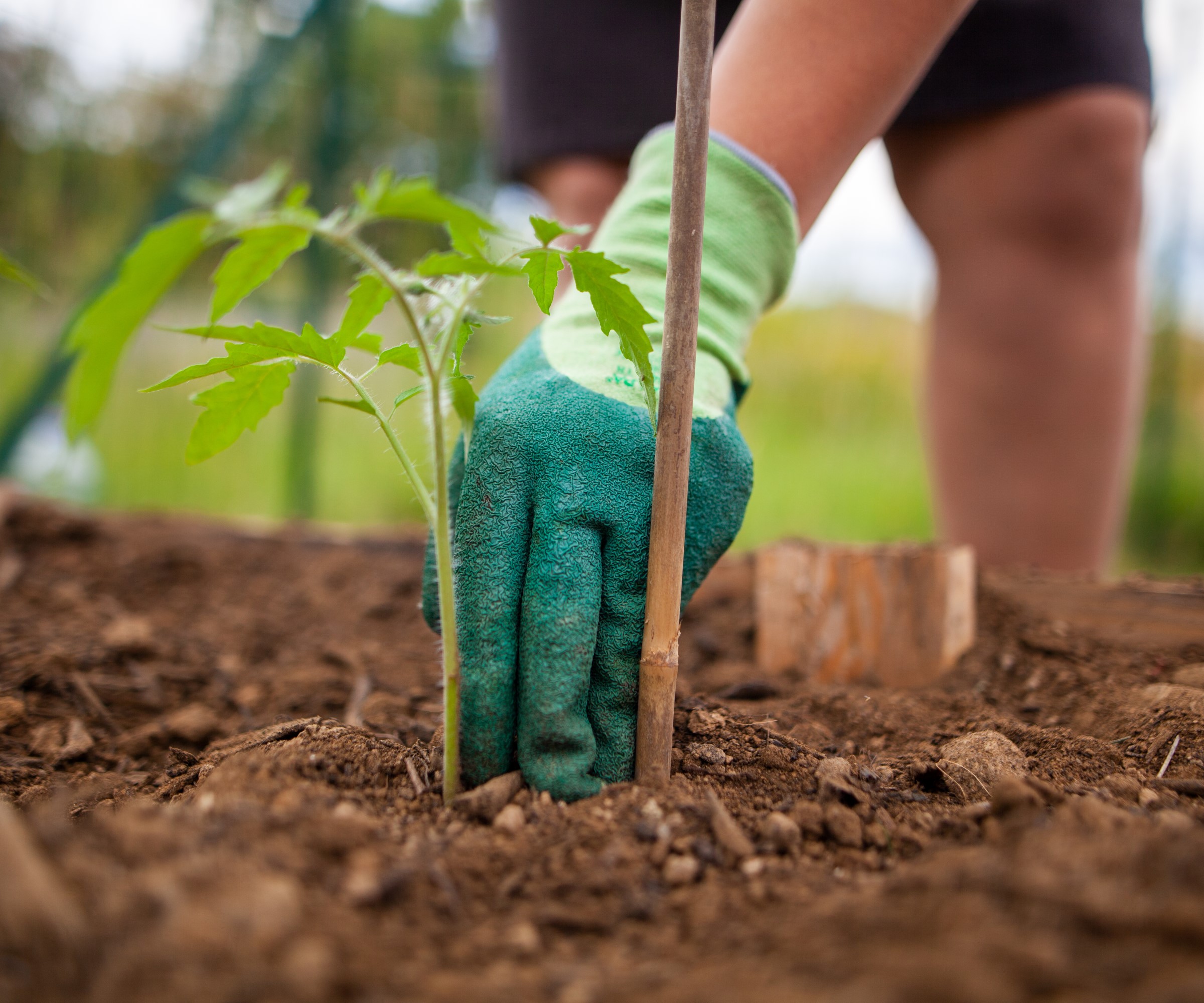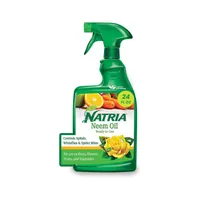Tomato pests that will destroy your plants – and garden experts' best ways to combat them organically
You can use other plants, beneficial insects, and birds to help stop pests ruining your tomato harvest


There are few crops more satisfying to harvest than fresh homegrown tomatoes; it is one of the reasons why they are top of many people’s favorite crops to grow at home. So it is important to do everything you can to prevent tomato pests reducing your yield or even potentially killing your plants.
When growing tomatoes, you need to be aware of the list of insects that are potentially going to be gunning for the leaves, stems, and fruits of your plants. Not only can your plant look visually unappealing after an attack, but its vigor can be affected and fruits can end up spoiled.
There are several organic approaches that can be used to successfully keep tomato pests away from your plants, or to deal with any outbreaks that occur, to ensure your harvest is not wiped out for the season.

Tomatoes can be grown outdoors or are commonly seen in greenhouses
What are the most common tomato pests?
As well as battling potential diseases that want to strike your plants, there are also many pests that can pose problems for home tomato growers. These include the likes of aphids, tomato hornworms, fruitworms, spider mites, flea beetles, slugs and snails. These various pests can pose big problems for your plants.
They can start attacking plants right from when you plant tomatoes, as young tomato seedlings can be completely killed by cutworms eating right through their stems. The dangers run right through to when you start to harvest tomatoes, with any fruit nibbled by slugs or other pests likely to be heading for the compost rather than the plate.
Thankfully, there are strategies and products, many of them organic, that can help to minimize or eliminate problems. Monitoring plants for signs of tomato pests should be seen as an important task, so you can act fast to deal with any issues and stop them completely ruining your plants.

Young tomato plants are at risk from cutworms, slugs, and snails
What issues do tomato pests cause?
Pests are capable of causing extensive damage to plants, whatever tomato varieties you are growing. Whether it is aphids sucking sap from the plant and causing curling leaves and stunted growth, to hornworms devouring leaves and fruit. It can be eye-watering to think that stems, leaves, and fruits can all be affected by pests.
Design expertise in your inbox – from inspiring decorating ideas and beautiful celebrity homes to practical gardening advice and shopping round-ups.
The damage they cause can reduce overall plant health and vigor and can even be capable of ultimately killing the plant. Add to that the fact that plants that have been hit by pests are likely to be under increased stress and this leaves them at higher risk of succumbing to disease, drought, or other pests.
A major issue some pests bring with them is the fact that, as well as causing damage themselves, they can also transmit tomato diseases from one plant to another. Tomato pests can spread viruses, bacteria, or fungi from infected plants around the garden. For example, thrips can spread the tomato spotted wilt virus as they move plant to plant sucking sap and causing damage.
Any potential yield will also likely be affected by the pests. A damaged plant will not be able to produce as big a harvest as possible, while several pests will tarnish fruit and leave it unable to be eaten or preserved.

A tomato hornworm can devour leaves and fruit
What is the best pest control for tomatoes?
There are natural ways for tomato growers to combat pest problems and the main one is to use tomato companion planting. The art of companion planting can be used whether you grow tomatoes outside in a vegetable garden or grow tomatoes indoors as part of planning a greenhouse. It is the method of using particular neighboring plants with benefits that can either lure pests away from your tomatoes, or bring in beneficial predators that can help to deal with your pest problem.
Emily Jones, a tomato grower of over 30 years and founder of Tomato Mentor, claims that the ‘antidote’ for many problematic tomato pests can be found in companion planting.
She says: ‘Some of the best companion plants that repel or deter pests are marigolds, basil, and garlic. All companion plants generally bring the "good guys" to fight against pests – this includes beneficial insects like ladybugs and lacewings.’
Some other great herbs and flowers that attract beneficial insects to help control pest populations include sweet allysum, calendula, basil, mint, and oregano. As well as using companion planting, using plants to attract birds into the garden, adding bird baths and bird feeders, can help combat pests as birds forage for bugs and critters.
While it may be more laborious than getting other plants, insects or birds to do the dirty work for you, handpicking still often remains the best way to remove larger pests such as hornworms, stink bugs and caterpillars, as well as slugs and snails. A daily inspection of plants might be required to spot these pests and pick them off before they do too much damage – and make sure you take them far away from the plants.
Susan Mulvihill, author of The Vegetable Garden Problem Solver Handbook, recommends knocking the pests into an empty container filled with water and some dish detergent, saying ‘the dish soap breaks up the surface tension so the insects won’t be able to get out of the container'.
When it comes to flea beetles, Susan admits they are ‘particularly challenging to control because they are so mobile’, however she does offer some advice for when you are planning a vegetable garden for the year that could help deter the pests.
‘If your growing season allows, plant tomatoes a bit later to avoid peak activity of these pests,’ says Susan.
Alternatively, she recommends: ‘An application of beneficial nematodes is an option because these microscopic roundworms will target the larval soil-dwelling stage of flea beetles.’

Susan Mulvihill is the author of The Vegetable Garden Problem Solver Handbook, available at Amazon, and gardens on 5 acres in Spokane, Washington State. She has also been writing garden columns for the Sunday edition of The Spokesman-Review newspaper for nearly 20 years.

Caterpillars will nibble fruits and cause them to be thrown away
What can I spray on tomatoes to keep bugs away?
Emily Jones advises home tomato growers that there are organic spray solutions and homemade bug sprays that can be used to help control pests. Often it requires two applications, around a week apart, to make a dramatic difference in the pest populations.
She says: ‘One of which is homemade insecticidal soap – a mix of solution of mild liquid soap and water to spray the infected plants, targeting soft-bodied insects like aphids and whiteflies.
‘Alternative to insecticidal soap is neem oil – all you need to do is apply neem oil spray to control the wide range of pests. Usually the instructions can be found on the label. ‘
When using neem oil on plants, it is best to apply the mixture every three weeks. This helps to deal with any pests problems present on the plant and also keep away any further infestations that could follow.

Emily has been growing tomatoes for more than 30 years, and she founded the blog Tomato Mentor as a way of helping others to improve their growing methods. She regularly writes about everything from watering tomato plants and common tomato pests to the best growing techniques people should use in their own space.
Neem Oil Spray for Plants | Available at Amazon
This multi-purpose Neem Oil Plant Spray can be used on a variety of plants as an insect repellent. It works against aphids, spider mites, whiteflies, caterpillars, fruit flies, beetles and more.
FAQs
What does spider mite damage look like on tomatoes?
Spider mites are tiny pests and difficult to see, but their presence can often be spotted by the appearance of a fine webbing seen on the plants. The damage they cause may show as yellow or white spots on the leaves of tomato plants. The pests are typically found on the underside of leaves and they cause damage by sucking the sap from individual plant cells. Leaves that are attacked turn yellow and then brown, while yellow speckles can occur on the surface of the fruit.
What is the problem with tomato hornworms?
Tomato hornworms are difficult to spot, as they are camouflaged and easily blend in with leaves. This often means they are not seen until a plant has been badly hit. They are a destructive pest that is actually the larval stage of the five-spotted hawk moth. The pests hit potatoes, peppers, and eggplants, as well as tomatoes, and can devour entire leaves, bits of stem, and they even nibble on the fruit. Tomato hornworms are most active at night and can be spotted by their black droppings on the leaves. Handpicking, companion planting to attract natural predators, and using diatomaceous earth are three ways to deal with hornworms. Always use food grade diatomaceous earth, such as this available at Amazon.
What are the little worms in my tomatoes?
While hornworms are larger and will eat leaves and may take the odd bite of a tomato, tomato fruitworm will feed hugely on the fruits. You will see their entry holes in the flesh and they will also cause damage to the interior of the tomato. They are between one and two inches long and create pea-sized tunnels into the fruit before creating a hollow space inside the tomato. Any tomato damaged by the fruitworm is inedible and any fruits spotted with the tell-tale signs of the pest needs to be thrown away quickly.
What does aphid damage look like on tomato plants?
Aphids may be tiny insects but they move in large numbers and can cause a lot of damage very quickly. These small insects tend to cluster on the underside of leaves and suck sap from the leaves and stems. Aphids can cause leaves to curl, be a reason why tomato leaves turn yellow, and for the plant to have stunted growth. Aphids can transmit viruses as they suck sap and move from plant to plant. The sticky substance they secrete can lead to powdery mildew hitting your plants too.
Whether you are growing tomatoes outdoors in a kitchen garden, in a backyard greenhouse, or growing tomatoes in pots on a patio or deck, your ambition is to get the best harvest possible. You do this by watering your tomato plants, fertilizing tomatoes, and pruning tomato plants to make them as productive as possible. Do not let that hard work go to waste and allow pests to ruin a yield. Get out there and keep a close eye on plants and monitor them for signs of pests. Many of the common tomato pests can be combated and you can still get a great harvest if you act quickly.

Drew has worked as a writer since 2008 and was also a professional gardener for many years. As a trained horticulturist, he worked in prestigious historic gardens, including Hanbury Hall and the world-famous Hidcote Manor Garden. He also spent time as a specialist kitchen gardener at Soho Farmhouse and Netherby Hall, where he grew vegetables, fruit, herbs, and cut flowers for restaurants. Drew has written for numerous print and online publications and is an allotment holder and garden blogger. He is shortlisted for the Digital Gardening Writer of the Year at the 2025 Garden Media Guild Awards.
